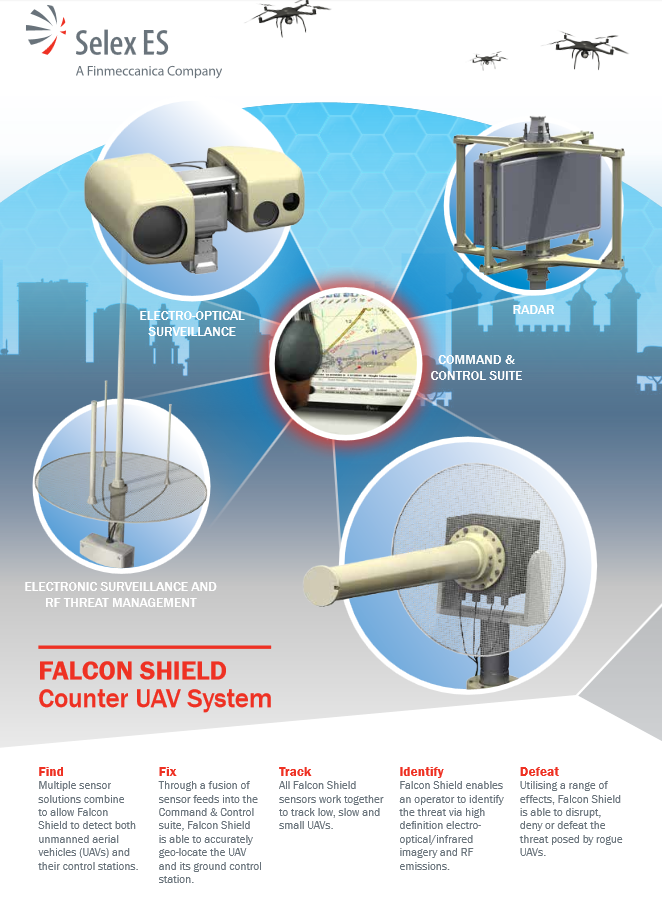As the global drone arms race continues to expand, so do the counter measures.
As I’ve covered over the last decade, the proliferation of drones in all of their forms has created new challenges to an increasingly crowded sky. The greatest challenge now being faced is the arrival of drone swarms – some imbued with sophisticated artificial intelligence – that could target high-value infrastructure or personnel.
A range of defense shields have popped up in response. We’ve seen systems that have focused on the ability to “control the electromagnetic spectrum” – aka electronic warfare – like Selex ES from the UK and their Falcon Shield.
The concept of using electronic warfare acknowledges that micro-drone swarms might not even be visible to the naked eye, but they won’t remain hidden from the electromagnetic spectrum.
A German company, Rheinmetall Defense Electronics, proposed four mounted lasers as a sea-based defense apparatus that could eliminate targets at the speed of light. The portable system was lovingly referred to by the company as “HEL on wheels” – High Energy Laser.
General Atomics has experimented in the past with laser systems attached to drones, and the company announced just two days ago that they are now experimenting with chemical lasers.
As nation after nation becomes wired for war and neutralizes then surpasses each other, new methods must be continuously developed to maintain military supremacy. This is the nature of military conflict and one of the prime reasons why the world seems to have new security threats each and every day. It becomes one endless problem-reaction-solution loop that only serves to benefit those who are invested in each of the three components.
Zero Hedge reports on the latest entrant to the anti-drone space. A company called Savage is also taking a more integrated approach to its system that can be retrofitted onto current standalone defense weapons.
Defense firm Savage Corp. has developed the SAVAGE missile (Smart Anti-Vehicle Aerial Guided Engagement), a low-cost smart weapon designed with a solid-fuel propellant rocket motor, able to travel around Mach 1, with an effective range of 3 miles, uses thrust-vectoring engines with artificial intelligence to knock small, fast-moving targets out if the sky, like drones.
Forbes said, “the most expensive part of any missile is the guidance system, and this is where SAVAGE is revolutionary.”
“SAVAGE uses AI-based computer vision algorithms to detect and track the target,” Savage Corp CEO Nick Verini told Forbes in an interview.
Verini said SAVAGE uses a high-tech sensor to detect flying objects in day or night conditions. He said an infrared sensor is an additional option for clients that want to combat drone attacks at night. The warhead on the drone killing missile is “hit-to-kill,” meaning it uses kinetic energy to destroy enemy targets…
“We are working with the DoD and several U.S. companies to get to a finished product,” said Verini.
As Zero Hedge notes, now that drone swarms are being discussed as a potential WMD, it continues to be a great time to enter into the business of war.
Nicholas West writes for Activist Post and Counter Markets.
Subscribe to Activist Post for truth, peace, and freedom news. Send resources to the front lines of peace and freedom HERE! Follow us on SoMee, HIVE, Parler, Flote, Minds, and Twitter.
Provide, Protect and Profit from what’s coming! Get a free issue of Counter Markets today.



Be the first to comment on "The Ever Expanding Business of Drones and Anti-Drones"